When visiting the South Pacific, you will most likely find yourself taking part in many traditional Kava ceremonies. It is an important aspect of visiting any village and Pacific Islanders have followed this tradition for centuries.
This cultural ritual offers a unique insight into Fijian traditions, fostering community and connection. In this guide, we’ll walk you through everything you need to know about what to expect during a kava ceremony in Fiji, ensuring you’re well-prepared to enjoy this unique cultural experience.
It can be a little confusing when you don’t know what to do, at a Kava ceremony but don’t worry, the Fijian people are very patient and will talk you through the process.
Table of Contents
What to Expect at a Fijian Kava Ceremony
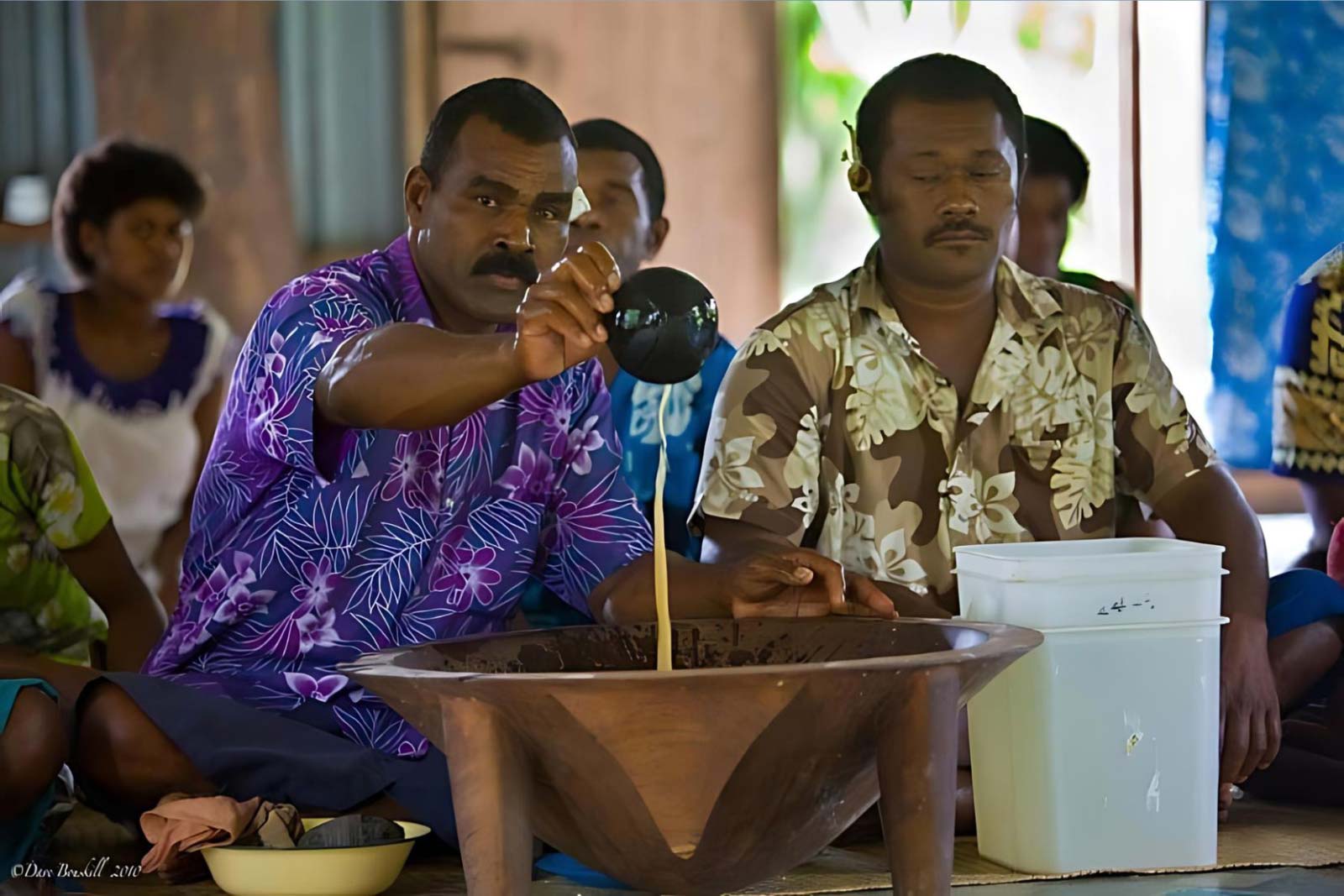
A kava ceremony is a traditional ritual in which participants drink kava, a beverage made from the crushed root of the yaqona (or kava plant). We have taken part in several kava ceremonies in Fiji, but they are celebrated throughout the South Pacific. In this post, we are going to talk about the steps taken at Kava ceremonies in Fiji, but the surrouding islands are also similar.
The ceremony is deeply rooted in Fijian culture and often marks significant events, celebrations, and social gatherings. Kava has calming effects, promoting relaxation and social bonding among participants.
When taking part in a traditional kava ceremony, it is important to respect Fijian culture. There are several rules to follow and we are going to go through the steps that you can expect.
What is Kava?
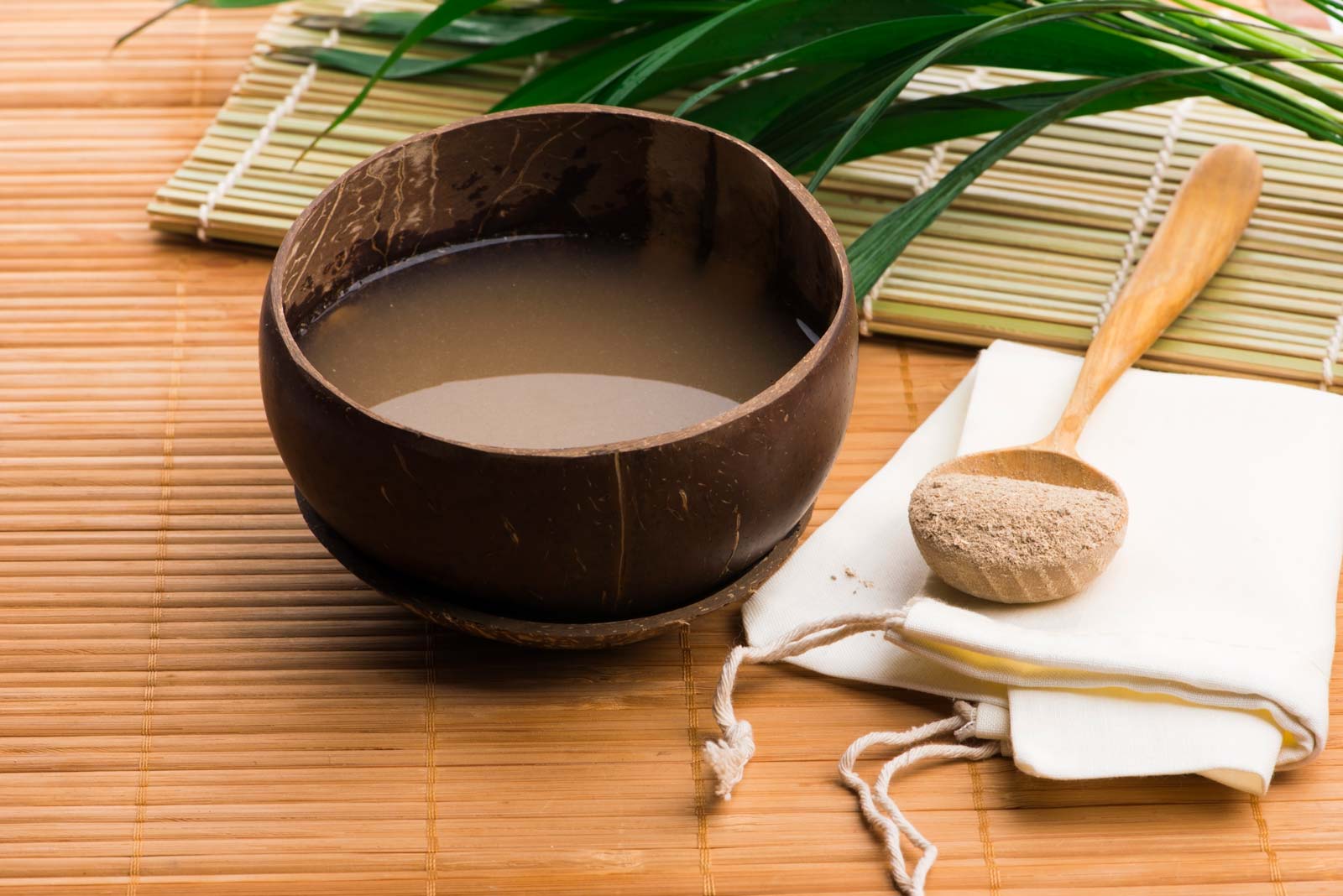
Kava, also known as kava-kava, is a traditional drink made from the root of the Piper methysticum plant, which is native to the South Pacific islands. The drink has been used for centuries in various Pacific cultures, including those in Fiji, Tonga, Samoa, and Vanuatu, for its sedative, anesthetic, and euphoriant properties.
Kava Ceremony Etiquette
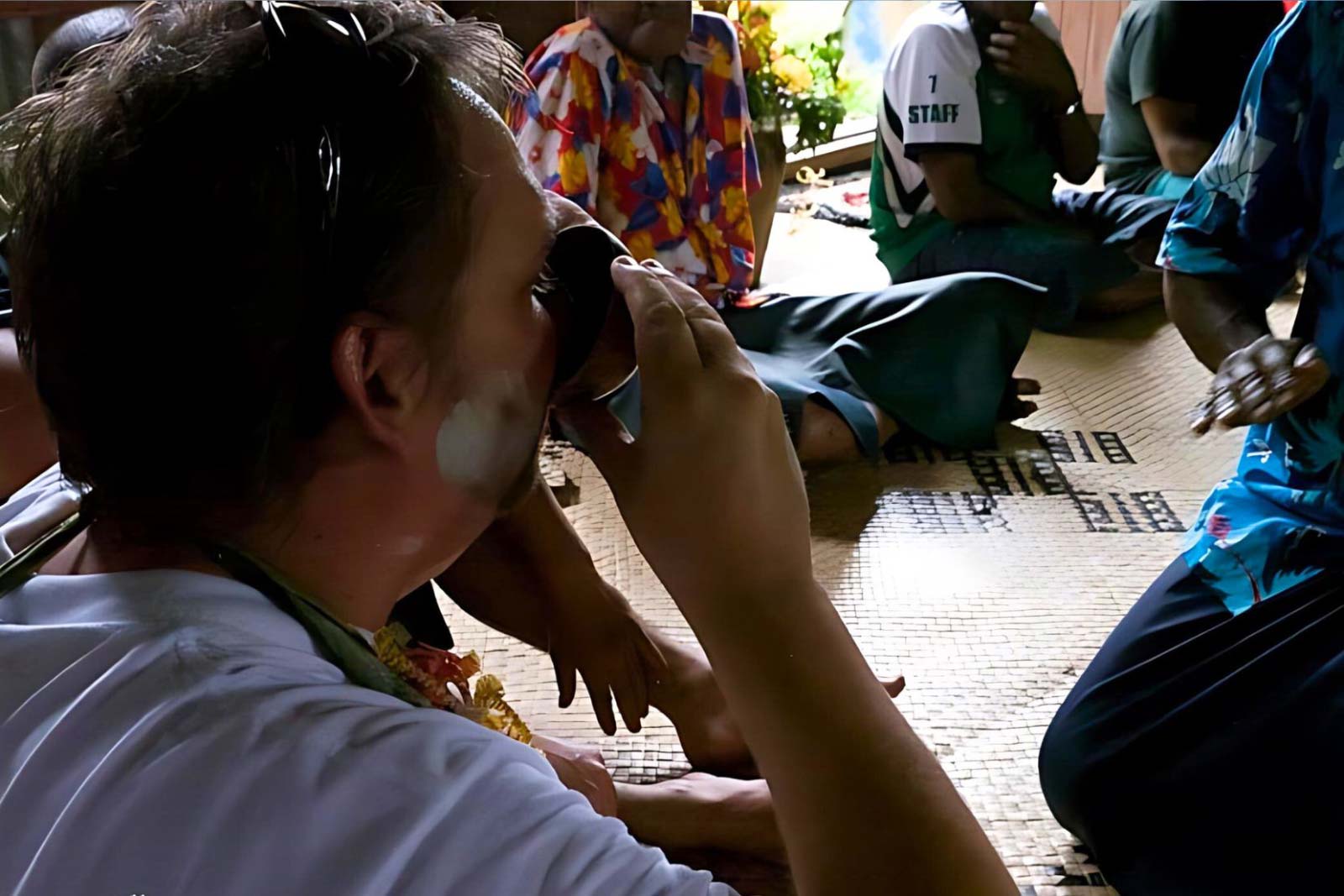
Kava traditions follow the rule that when entering a village in Fiji, it is customary for guests to bring a gift of kava root known as yaqona. You can pick up a kava root at the local market. That root will be crushed into liquid and put into a kava bowl for guests to drink. Before people drank from a communal bowl.
In recent years, kava ceremonies have changed, and now they take turns scooping from the large communal bowl using their own bilo. (half a coconut).
The Kava Ceremony Process
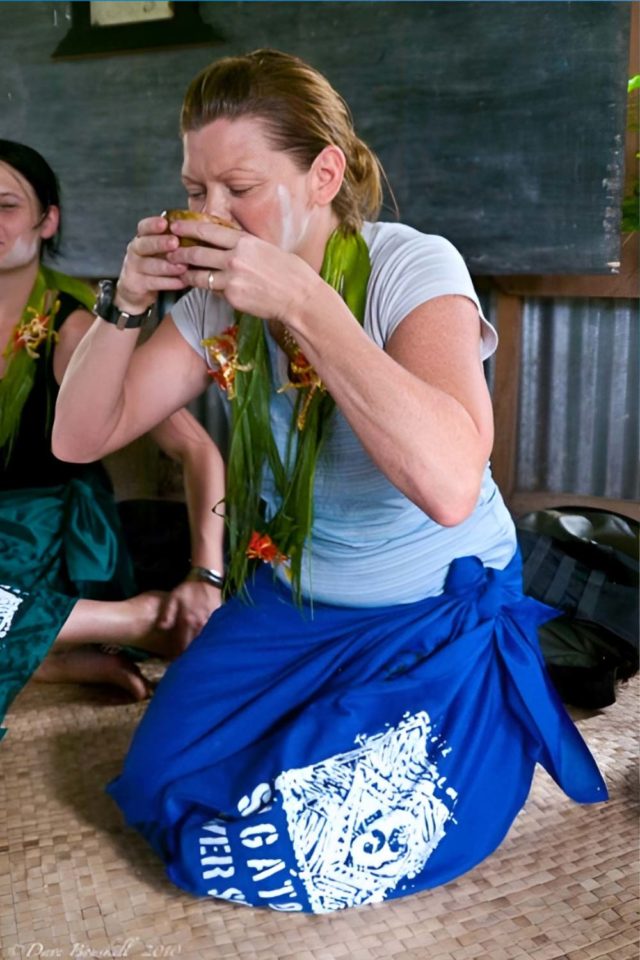
Wear conservative clothing as a sign of respect. Women should always wear a sulu (sarong) and dress modestly. Men should dress respectfully as well. Many men wear sarongs in Fiji, and you can too! At the least, men should have their shoulders covered. But wearing long shorts and short-sleeved shirts that cover your shoulders is acceptable.
If you don’t have a sarong a long skirt will work. Long shorts are acceptable as well. But I always pack a sarong to tie around my waist when entering a village.
The eldest man enters the house first followed by the rest of the men and then the women. When entering the house, remove any hats and sunglasses. And then have your leader greet the chief or host first.
Welcoming Ritual
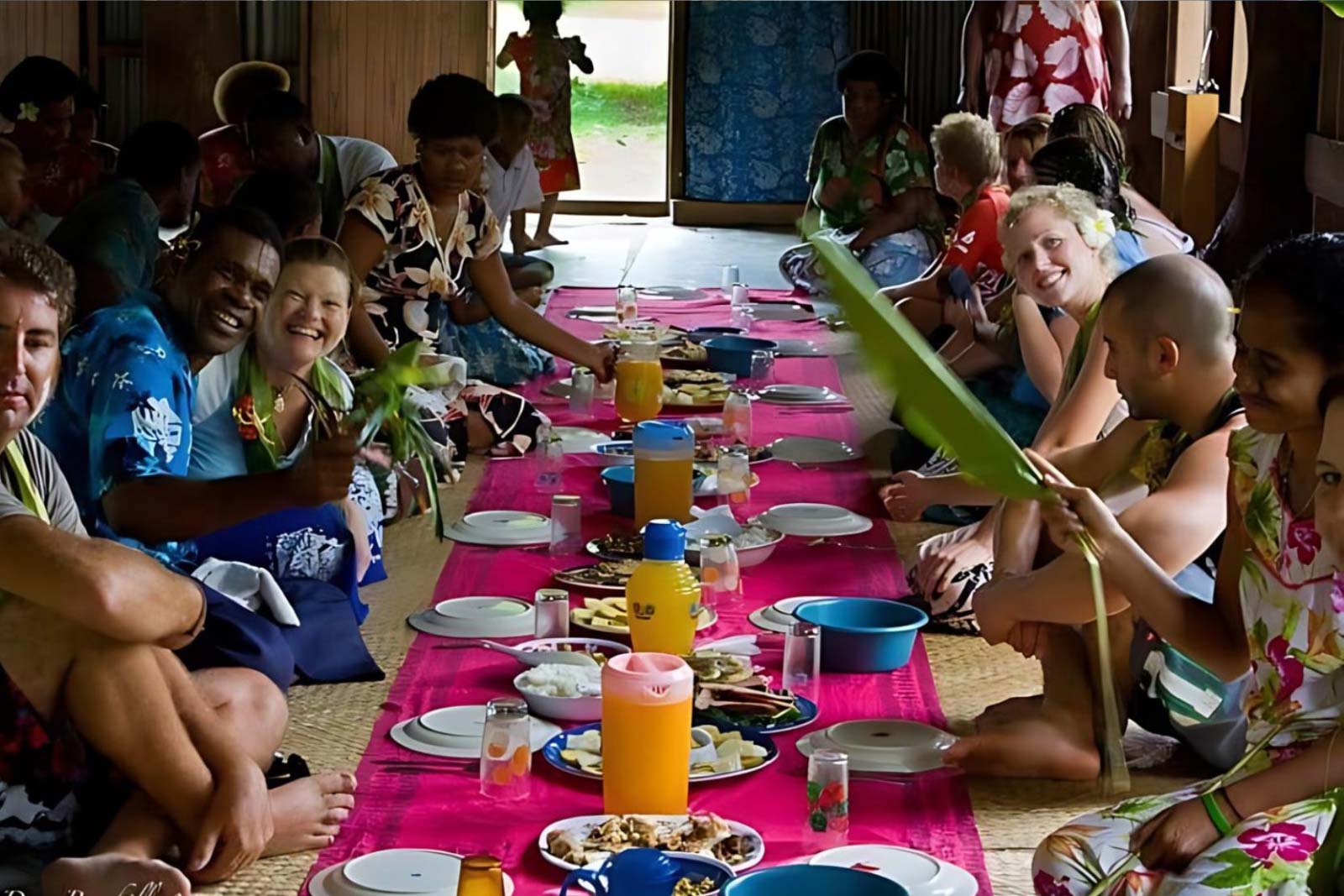
The kava ceremony typically begins with a welcoming ritual. The village chief or a designated leader welcomes guests. Before the ceremony begins, the chair explains the ceremony while participants are then seated in a circle, with their village chief or leader at the center.
When the ceremony begins, the chief (the eldest man in your group) presents the root to the Village Chief.
The ceremony then begins as the villagers grind up the kava root and strain it through a cloth bag into a large wooden bowl called a tanoa. It is placed in the middle of the room. It is then offered to your group’s chief.
After your chief has had a sip, the village’s executive head drinks the Kava next.
Once the two heads of the party have had their drink, it is offered to the rest of the room according to rank. The men drink first and then the women.
The Serving
The kava is served in a coconut shell cup called a bilo. The cup is presented to the chief or eldest member first, and then passed around according to rank. When receiving the kava drink, you should clap once, drink all the contents of the cup, and then clap three times afterward. This ritual is repeated until everyone has had their turn.
Drinking Kava
When the kava comes to you, there are traditions to follow. When you drink kava be sure to follow these steps.
You will be offered the option of “high tide,” or “low tide” A high tide means you would like a full cup. If you ask for a low tide, it means they will give you a half cup of Kava. The locals seem to like to give you a full cup to be respectful.
When you received the coconut, follow these steps and have a great time!
- Clap your hands once with a cupped hand making a hollow sound
- Yell: Bula!
- Drink in one gulp
- Clap three times with hands cupped to make that hollow sound again.
- Say: “Mathe” pronounced maw-they
How Does Kava Taste? Kava tastes kike muddy water, literally. There is also a bit of bitterness. It is how should you say…an acquired taste.
How you will feel after Tasting Kava

Kava has a distinct earthy taste and may cause a numbing sensation in the mouth. Once you drink Kava, you will probably feel tingling and numbness in your tongue. Kava is a very mild narcotic and is known to make people feel relaxed.
It’s known for its calming effects, promoting a sense of relaxation and well-being. You are guaranteed to have a good night’s sleep after a couple of high tides and you will wake up feeling well-rested and energized.
Fijian people are known to be some of the happiest on the planet and somehow we think that the Kava may have something to do with that.
Kava was once sold as a relaxant in the United States in pill form at one time, but they couldn’t capture the exact formula of drinking it fresh from the root.
As the ceremony progresses, participants often engage in storytelling, singing, and dancing, fostering a sense of community and connection.
After the Kava ceremony – Celebrations
Once the Kava ceremony is over, the festivities of song and dance can begin. The Kava ceremony brings two families together and they are now one after the ceremony. It is a big celebration after the Kava ceremony with dancing and music.
It’s a wonderful way to interact with the local villagers. Don’t be shy, join in the dancing. Fijians are the most friendly and welcoming people on earh.
After the Kava ceremony, the visitors are free and welcome to enter and explore the village as they please.
What Islands Perform Kava Ceremonies
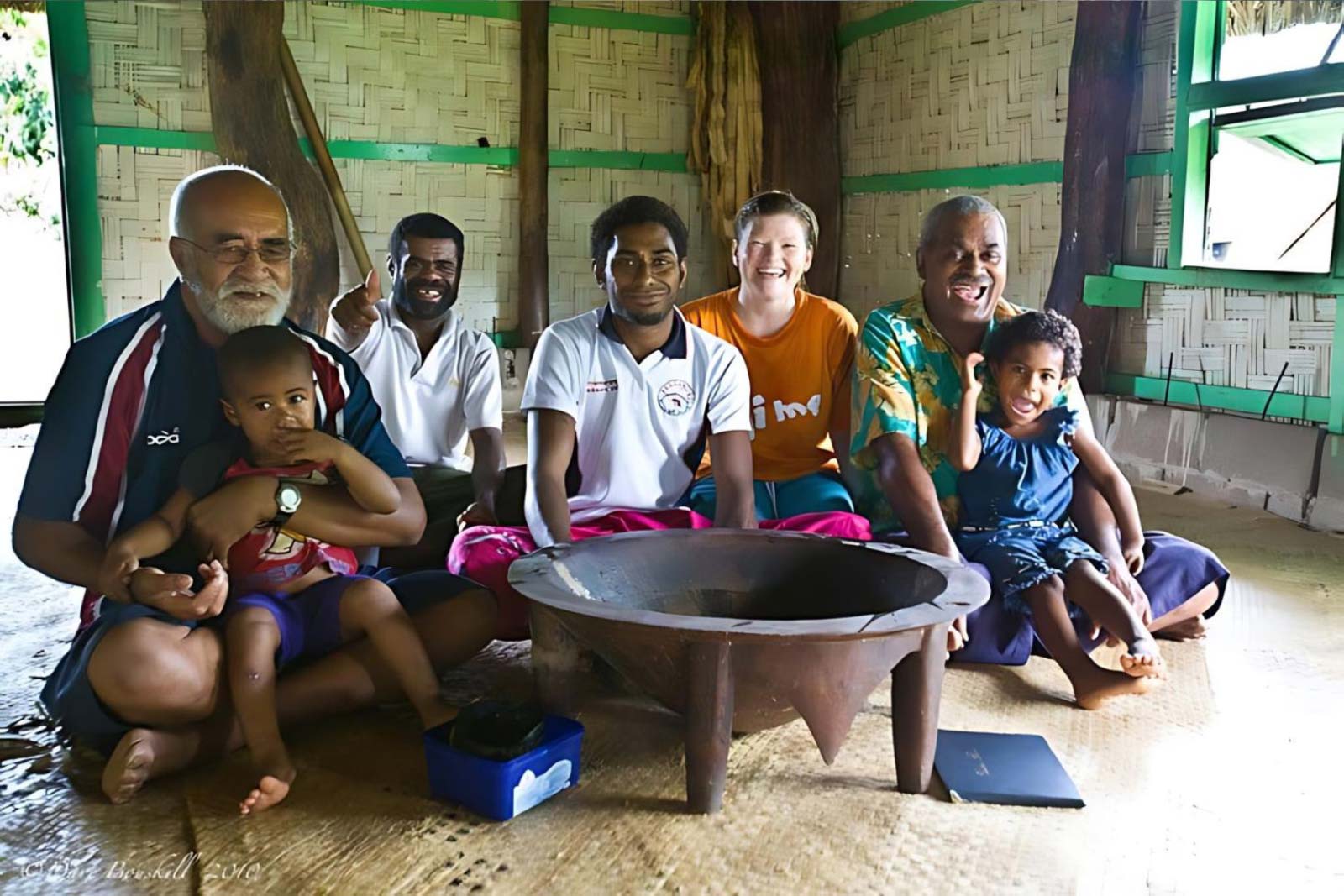
We took part in Kava ceremonies in Fiji, but they an are an integral part of the cultural fabric across several islands in the South Pacific. Each region has its unique traditions and ways of preparing and celebrating with kava. Here are the key locations where you can experience authentic kava ceremonies:
Vanuatu is often considered the birthplace of kava. Here, kava is central to social gatherings, ceremonies, and community events. The kava bars, or nakamals, are popular spots where locals and visitors alike can enjoy this traditional drink in a communal setting.
Other countries that have Kava ceremonies are Tonga, Samoa, Papua New Guinea albeit, the rituals in Papua New Guinea are not as common and are influenced by neighboring Pacific Islands. Apparently, even Hawaii has started to emrace kava and kava bars have emerged as places where people can gather to enjoy kava in a relaxed setting.
Read More about travel in Fiji:

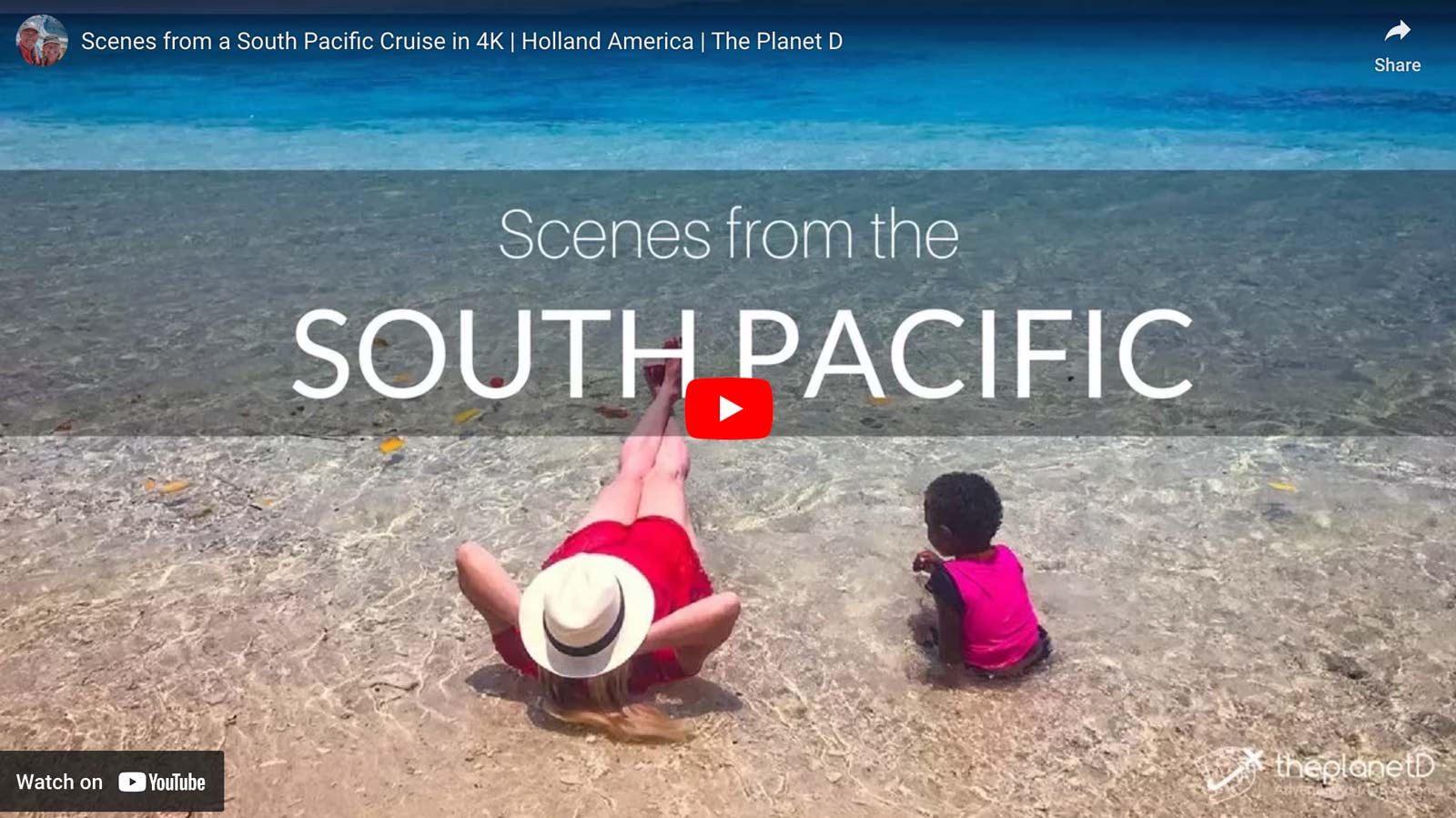
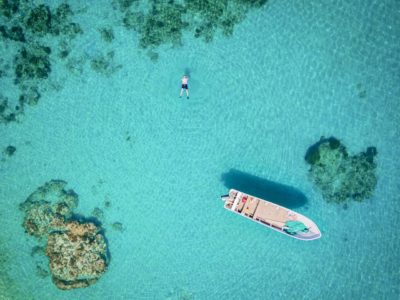
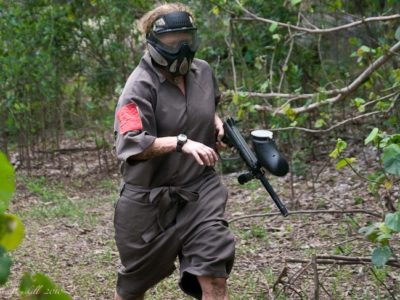
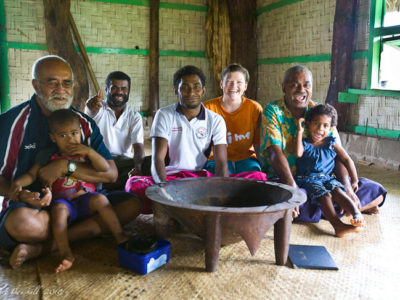
Firstly, as a participant at a kava ceremony, your hosts expect you to dress respectfully and modestly. It is tradition to present the leader (your host) with a Kava root, which you can find at any Fijian market. This will show your true understanding of the Fijian culture and the significance of the kava ceremony.
Bonjour,
I am inquiring to know if I could use a copy of the first photo from this web page (ttp://theplanetd.com/kava-ceremony-in-fiji-etiquette/) for the publication.
Could you please contact me for more informations
Sincerely
Patricia
Hi Patricia, you can contact us at theplanetd (at) gmail (dot) com Cheers.
I am a photographer based in Canada. Recently I have had a few clients of Fijian origin. I was introduced to Kava by one such client. The first time I took it, I was anxious as to whether it would make my hands less steady to take pictures. The family assured me it’s nothing like alcohol. Just the relaxed feeling. I tried it. Loved it.
Usually wedding shoots means 8 to 10 hours of shoot. My wrists do take a brunt of the heavy camera load. Kava just works like a miracle. Mind is clear, yet I am alert. It’s difficult to explain. I love the feeling.
I am so glad I was introduced to Kava.
Hi everyone! As a first timer travelling to fiji I would love to try a kava ceremony but have worries as to whether it would make me sick. Do they use safe drinking water that is suitable for travellers to consume? I would image they would but I would hate to pick up a tummy bug that would ruin my trip.
That’s a good question Sarah. I’m not sure how they filter the water, but we had quite a bit of Kava and were completely fine. I don’t know of anyone who got sick from Kava. I have a feeling it is like drinking alcohol. All the parasites and bacteria are fermented away.
I’ve taken Kava for my anxiety for years and only recently have started to look into it’s cultural importance and history in other countries. Thanks for this post.
Interesting thanks Mike. I had heard that you can buy it in the pill form, I can believe that it would help with anxiety. You feel very relaxed after drinking it.
Great post. Allow me to add that while drinking kava is the hard fix to overcoming depression and anxiety, the softer subtle cure comes from the camaraderie experienced when interacting with others.
More here: http://www.fiji-taro-and-kava.com/benefits-of-kava.html
Well put Simione:)
Been there, done that. And Kava does taste like muddy water!
More here!
http://www.thetraveltart.com/fiji-kava-ceremony-like-drinking-muddy-water/
.-= The Travel Tart´s last blog ..South Africa Homes – The Villa at Days At Sea =-.
Hi Dave and Deb, thank you for sharing this! I love the formality of ceremonies like this. I’ve been intrigued with kava ever since I interviewed photographer Greg Davis for my blog. One of the best experiences of his RTW trip was drinking kava with locals in Fiji.
.-= Jennifer Barry´s last blog ..Live Richly Round-up 8- Thanksgiving Edition =-.
Thanks for writing up these steps for a traditional Kava ceremony. My cousin in Hawaii had a few bags of powdered kava that we experimented with and I became extremely relaxed, good stuff! Would love to try out a real ceremony sometime!
.-= Migrationology´s last blog ..Casinos- Fortresses and Egg Tarts- 12 Hours in Macau =-.
I really didn’t like the taste of the Kava (it’s like dirty sandy water, urgh) but the ceremony itself was fun, for sure. The traditional singing was so awesome. The first ceremony we went to, the guy who wrote the Lonely Planet Fijian phrasebook took us to it! Then the villagers took us out on a outrigger canoe at sunset which was amazing.
Fortunately, as a woman, after the first cup of Kava I had the option of saying I didn’t want anymore. The Fijians assume it’s “too much” for women to deal with so they let you get away with it. Men have less of that option but if you’re a foreign guy, they don’t look down on you as much as they would a Fijian man who turned down Kava.
My favorite part was shopping for the Yaqona (yang-oh-na) in the market in Suva. Some of the ones you can buy are HUGE and expensive! We had fun looking at all the different bundles at various stalls. Bargaining with the owners is the best part. 🙂
Ummmm, love me some kava! Great post!!!
.-= Andi´s last blog ..Cuba- Day 5 Part 1 =-.
How fun! Years ago I had tried the pill form of Kava to help me sleep but it never did work well, I’m sure because you’re right – they can’t really distill the essence of the root and keep it strong enough in pill form…especially since most people would not like to feel a numbness…but Fiji is on my “bucket list” so now I will look forward to experiencing this ceremony!
.-= Trisha Miller´s last blog ..Is Self-Publishing Your Book Right For You =-.
This was also a highlight for me on my trip to Fiji many years ago…I still remember it well.. We brought Kava and partook in the ceremony as a request to enter their village and to hike to their waterfalls (one of my BEST travel experiences!).
How did you feel after the Kava? I felt like I was ready to go to the dentist! LOL
.-= Melanie´s last blog ..Nov 21- First Time Flying =-.
You know there are so many things I wish I had better documented before I started blogging and my Kava experience is one of them. It was definitely a highlight for me in Fiji.
.-= ayngelina´s last blog ..Viva Cuenca! =-.
Great post… what I want to know is how did kava taste?! I’ve heard it tastes just like muddy water.
.-= Kieron´s last blog ..5 reasons we’re joining the gym before traveling =-.
Great question Kieron, so good that I added the answer into the post. I actually meant to do that, so thanks for reminding me! And you are right. Kava tastes exactly like muddy water with a bit of bitterness. But really, it is just like muddy water. But the Fijians seem to love the taste. I think it is an acquired taste. Dave and I didn’t mind the taste at all.